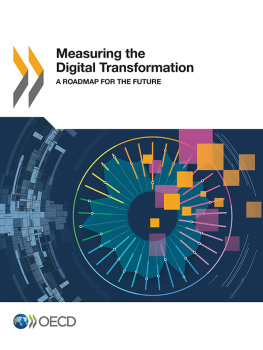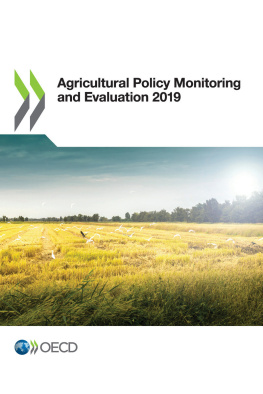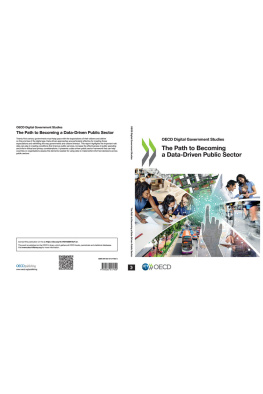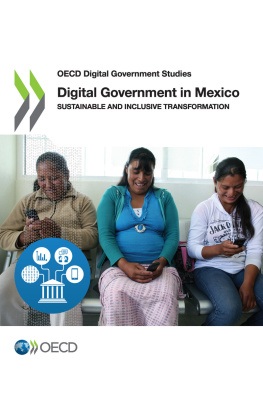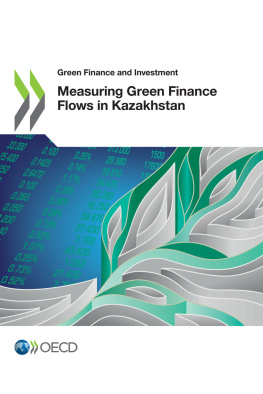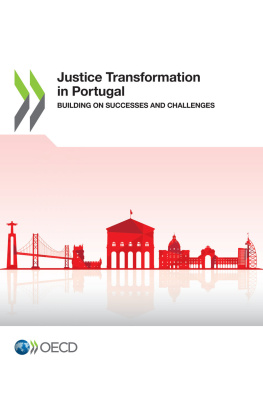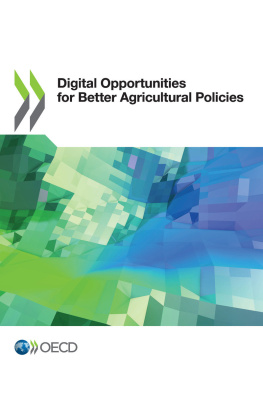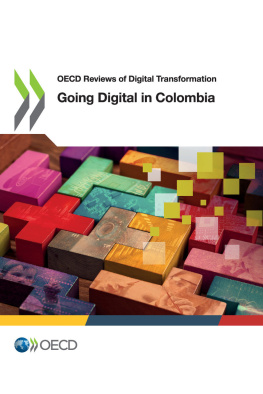OECD - Measuring the Digital Transformation
Here you can read online OECD - Measuring the Digital Transformation full text of the book (entire story) in english for free. Download pdf and epub, get meaning, cover and reviews about this ebook. year: 2019, publisher: OECD Publishing, genre: Politics. Description of the work, (preface) as well as reviews are available. Best literature library LitArk.com created for fans of good reading and offers a wide selection of genres:
Romance novel
Science fiction
Adventure
Detective
Science
History
Home and family
Prose
Art
Politics
Computer
Non-fiction
Religion
Business
Children
Humor
Choose a favorite category and find really read worthwhile books. Enjoy immersion in the world of imagination, feel the emotions of the characters or learn something new for yourself, make an fascinating discovery.
Measuring the Digital Transformation: summary, description and annotation
We offer to read an annotation, description, summary or preface (depends on what the author of the book "Measuring the Digital Transformation" wrote himself). If you haven't found the necessary information about the book — write in the comments, we will try to find it.
OECD: author's other books
Who wrote Measuring the Digital Transformation? Find out the surname, the name of the author of the book and a list of all author's works by series.
Measuring the Digital Transformation — read online for free the complete book (whole text) full work
Below is the text of the book, divided by pages. System saving the place of the last page read, allows you to conveniently read the book "Measuring the Digital Transformation" online for free, without having to search again every time where you left off. Put a bookmark, and you can go to the page where you finished reading at any time.
Font size:
Interval:
Bookmark:

OECD (2019), Measuring the Digital Transformation: A Roadmap for the Future , OECD Publishing, Paris.
https://doi.org/10.1787/9789264311992-en
Sound measurement is crucial for evidence-based policy making; it helps to identify the need for policy intervention, enhances accountability, and improves the evaluation of the efficiency and effectiveness of policy actions. The demand for useful data and measurement tools relating to the ongoing and accelerating digital transformation is particularly acute due to the wide-ranging role that digitalisation and digital technologies play in economies and everyday lives.
The aim of Measuring the Digital Transformation: A Roadmap for the Future is not to rank countries or develop composite indicators. Instead, its objective is to provide policy makers and analysts with key indicators for each of the dimensions of the Going Digital integrated policy framework but also additional indicators providing detail and nuance, and link to relevant policy levers, to give analysts, stakeholders and policy makers deeper insights into how their economies are performing along those dimensions. The publication draws upon the wealth of data available at the OECD, as well as other international organisations and private data providers.
A forward-looking measurement roadmap develops nine actions that, if prioritised and implemented, would substantially advance the capacity of countries to monitor the digital transformation and its impacts. The first four overarching actions are directed towards building the next generation of data and indicators capable of dealing with the challenges of the digital transformation: make the digital economy visible in economic statistics, understand the economic impacts of the digital transformation, measure well-being in the digital age, and design new and interdisciplinary approaches to data collection. Five further actions target specific areas identified as requiring attention: transformative technologies, data and data flows, skills in the digital era, trust in online environments, and governments digital strengths. The actions build on 19 roadmap pages, spread throughout the publication, that identify policy needs for measurement, discuss the challenges and propose options for international action.
Trends in the digital era (). This opening chapter sets the stage and develops a narrative around technology trends and digital transformations. It highlights trends rather than country comparisons and makes use of less-traditional data sources. The target audience is any person interested in understanding the broad picture and emerging developments. It highlights elements such as the rise of Big data analytics and artificial intelligence, the increased demand for cloud computing services, the nature of the global data infrastructure, the increasing digital transformation of all sectors, the impact of digitalisation on the workplace and on younger generations and scientists, and the evolution of digital divides. It also offers examples of the use of text-mining techniques, Internet-based statistics and online job vacancies to develop new indicators of interest.
Growth and well-being (). This chapter illustrates the contribution of information industries and economic activities undergoing digital transformations to growth, productivity, global production networks, the composition of demand, trade and jobs in global value added chains. It also looks at how digital technologies are used by citizens and provides examples of impacts on their well-being. The chapter includes three roadmap pages that examine how to measure digital intensity in sectors, explore indicators of well-being in the digital age and address the challenges of developing a digital satellite account.
Seven thematic chapters ().
Issues related to education and skills are not singled out as separate dimensions in the policy framework; rather, they are explored as enabling factors for other dimensions. Likewise, indicators related to skills are proposed throughout the publication: on trust looks at digital security skills.
The target audience for the thematic chapters includes policy analysts with a certain level of sophistication in the use of indicators. Roadmap pages feature challenges and actions surrounding the Internet of Things, cloud computing services, open source software, online platforms, platform-mediated workers, e-skills, e-commerce, digital trade, and data and data flows, among others.
A smaller set of indicators for each of the seven dimensions of the policy framework have been selected for visualisation and international comparisons in the Going Digital Toolkit. The Toolkit also provides easy access to additional indicators from the publication, and the underlying data and databases, as well as related publications, policy guidance and more: www.oecd.org/going-digital-toolkit .
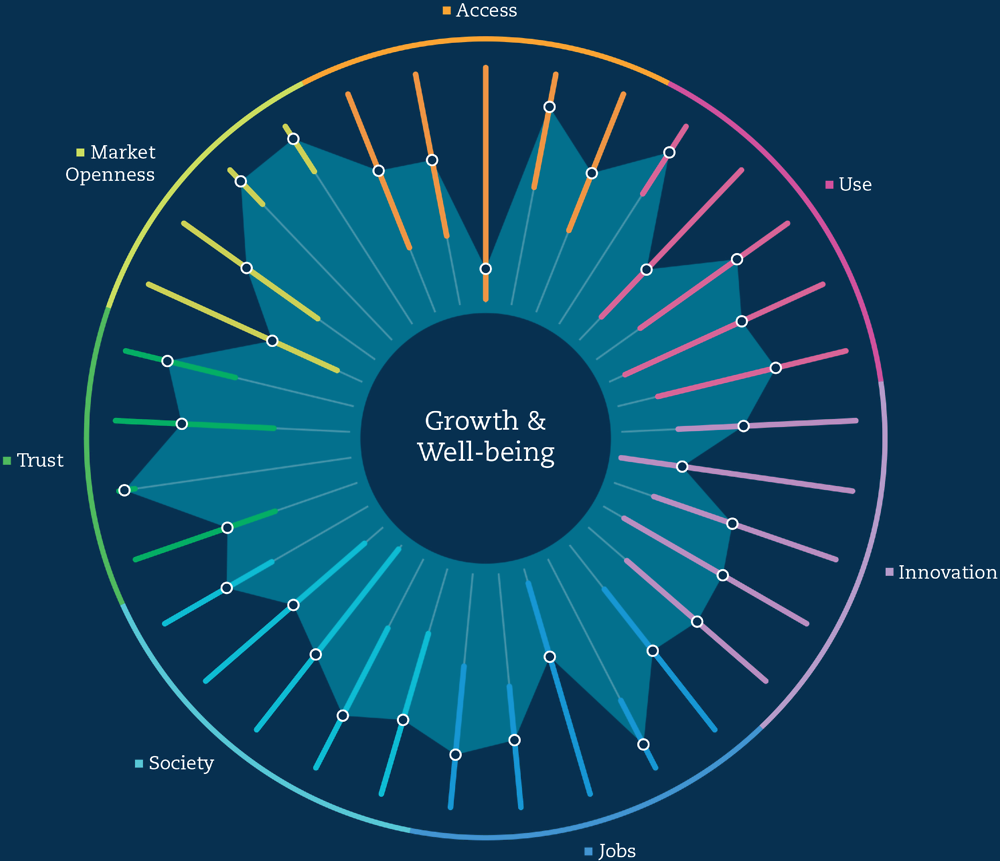
Note: In the Going Digital Toolkit countries are benchmarked across 7 policy dimensions and 33 indicators. The black dot represents the sample average and the coloured lines represent the spread of OECD countries with respect to the top-performing OECD country within each indicator.
Source: OECD Going Digital Toolkit, www.oecd.org/going-digital-toolkit .
Font size:
Interval:
Bookmark:
Similar books «Measuring the Digital Transformation»
Look at similar books to Measuring the Digital Transformation. We have selected literature similar in name and meaning in the hope of providing readers with more options to find new, interesting, not yet read works.
Discussion, reviews of the book Measuring the Digital Transformation and just readers' own opinions. Leave your comments, write what you think about the work, its meaning or the main characters. Specify what exactly you liked and what you didn't like, and why you think so.

